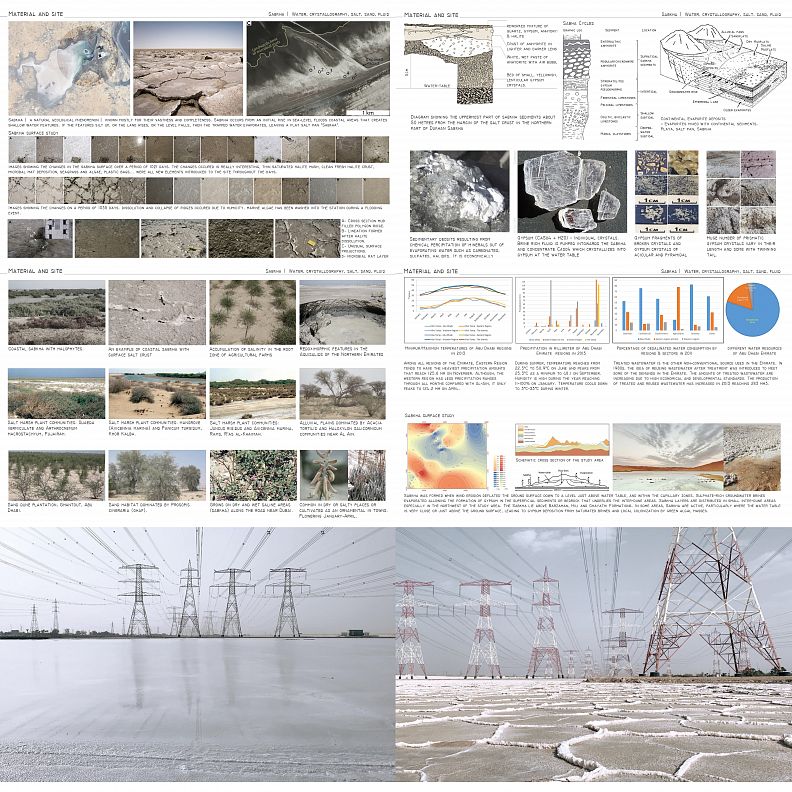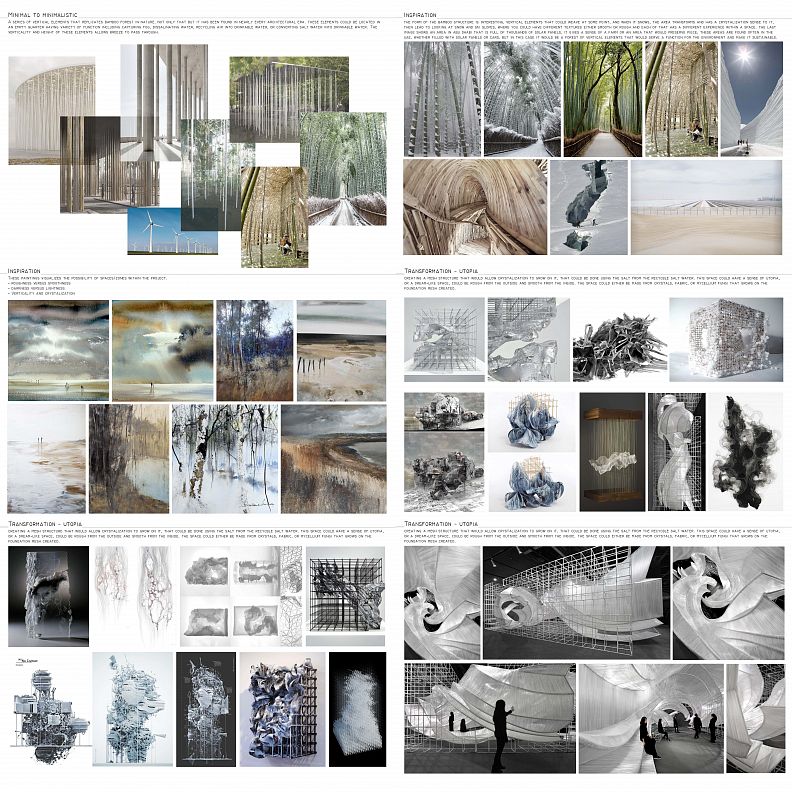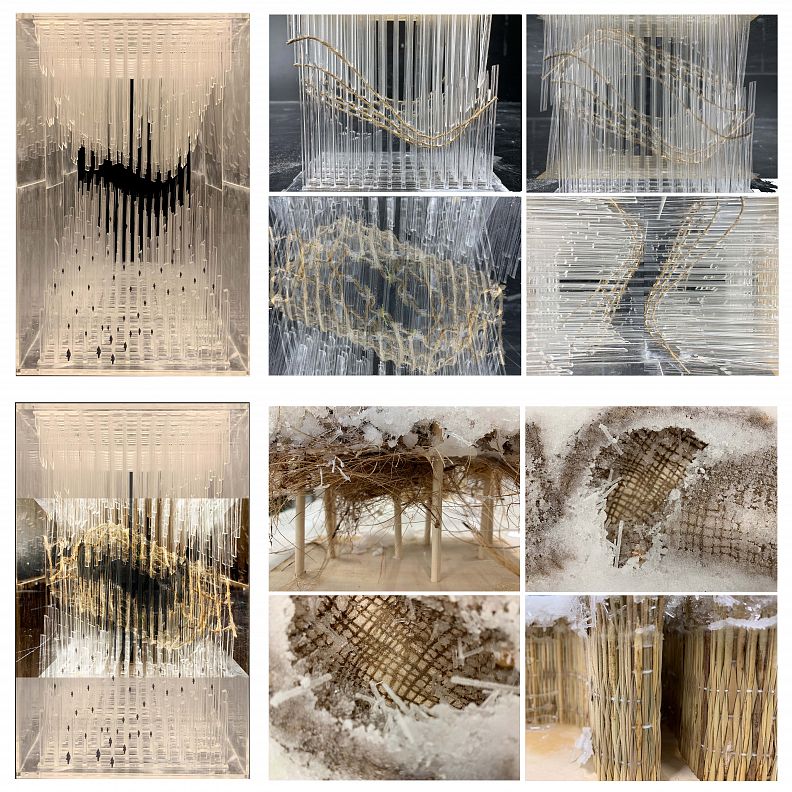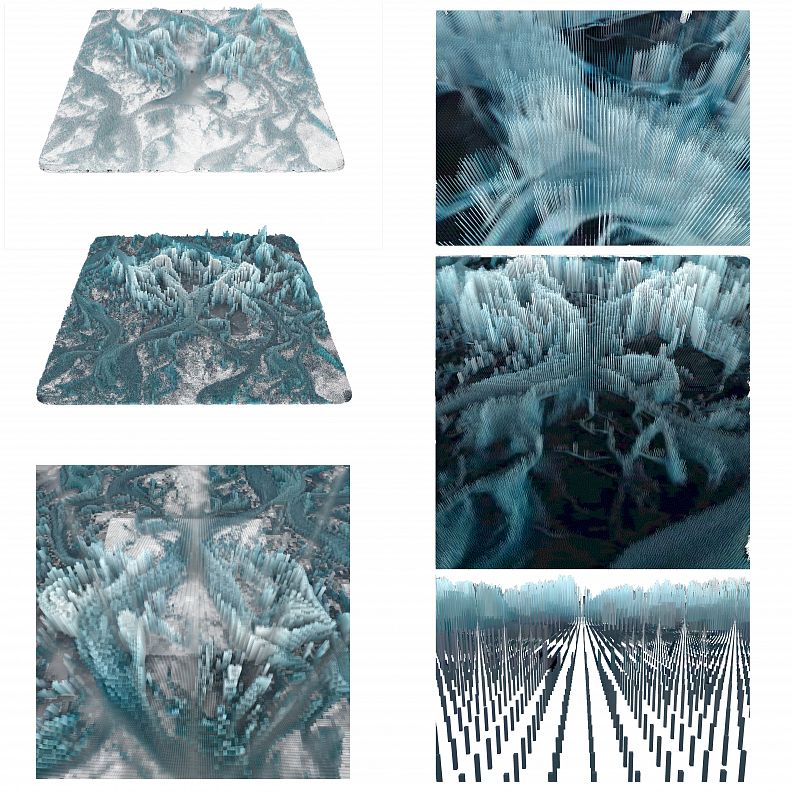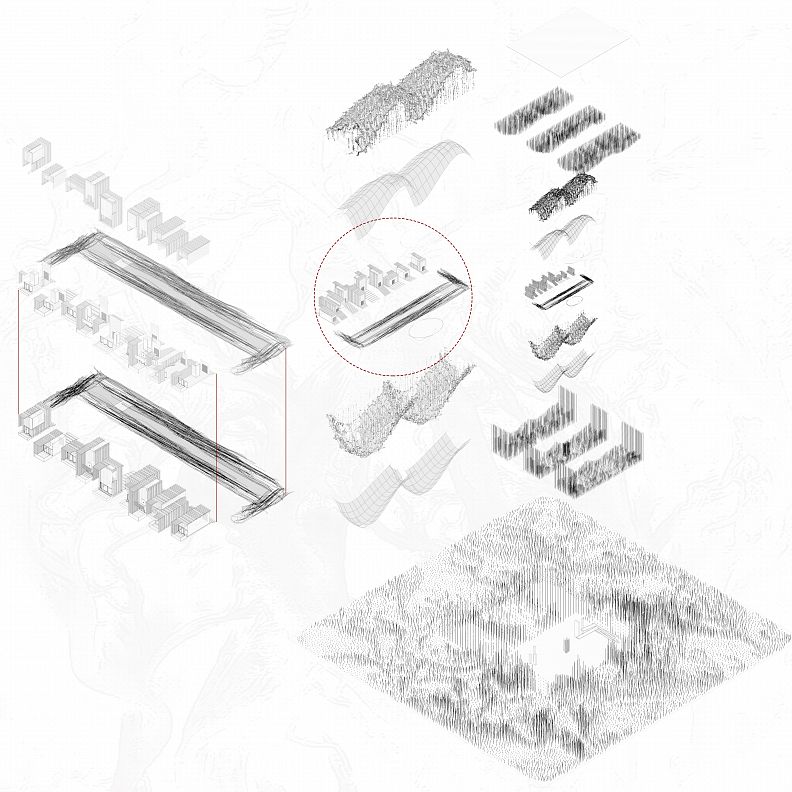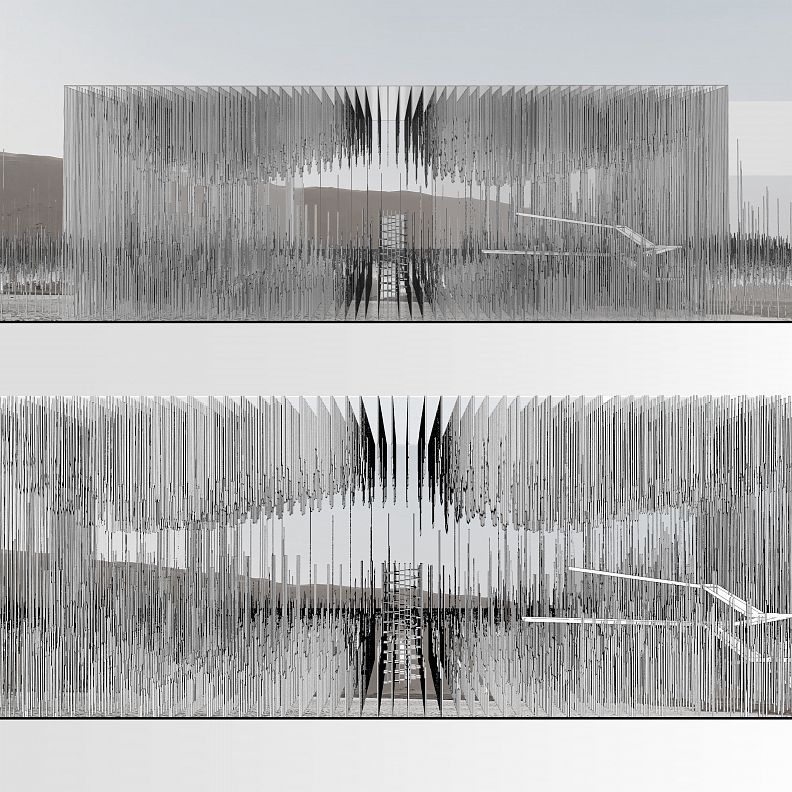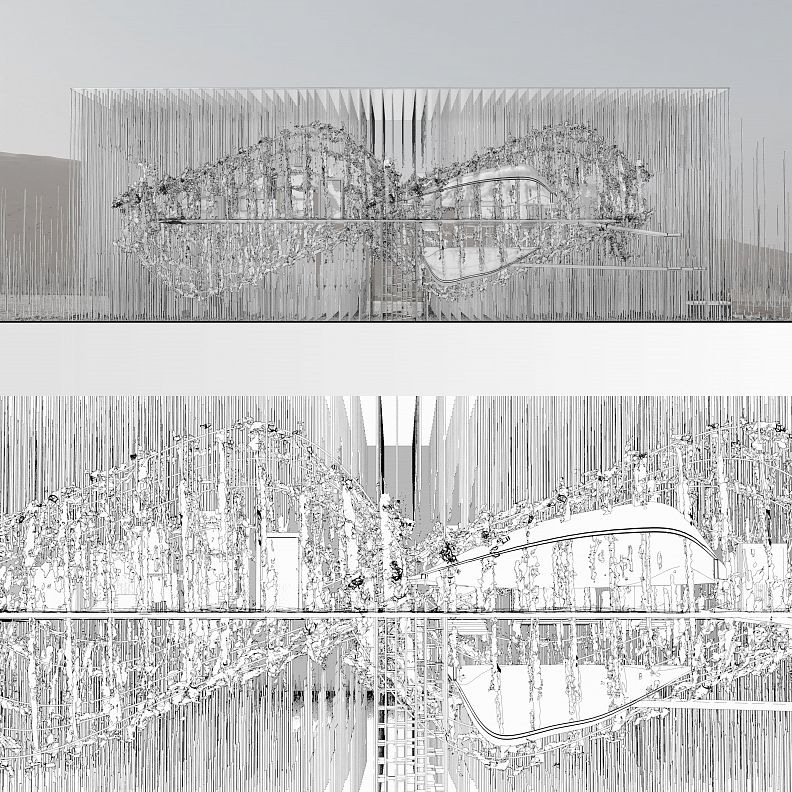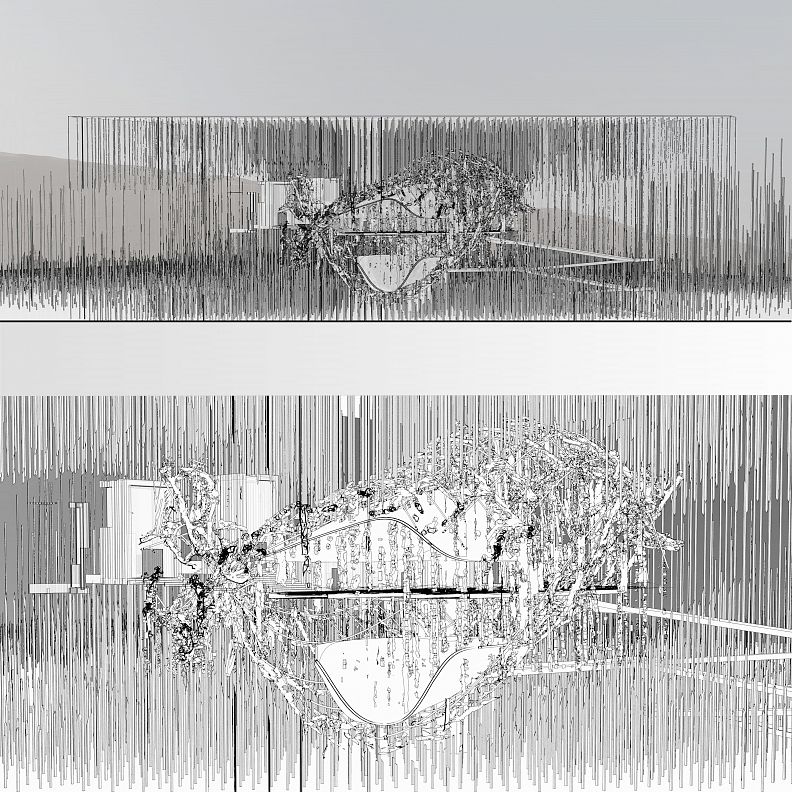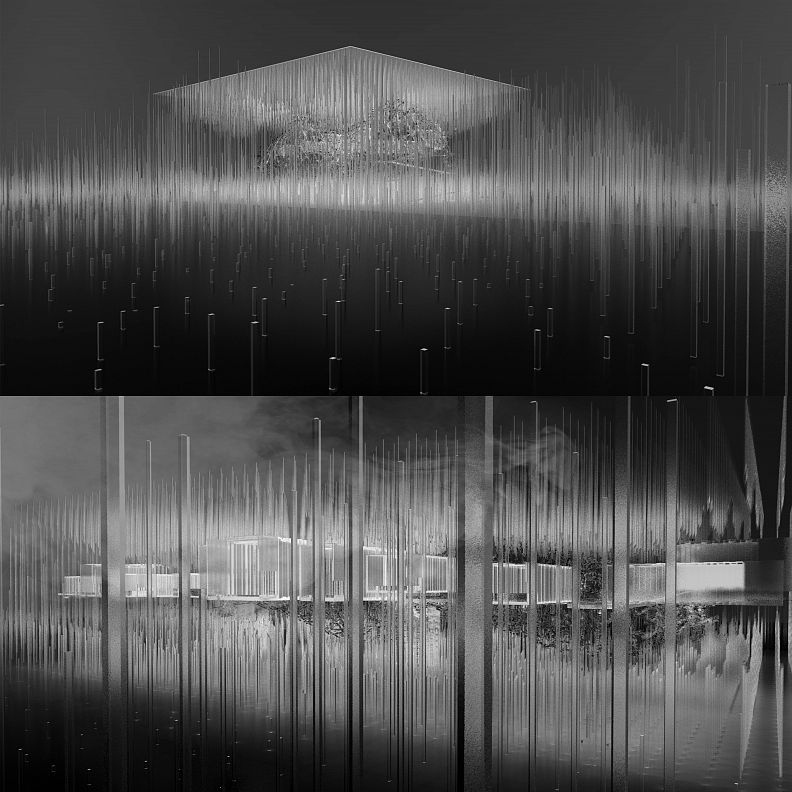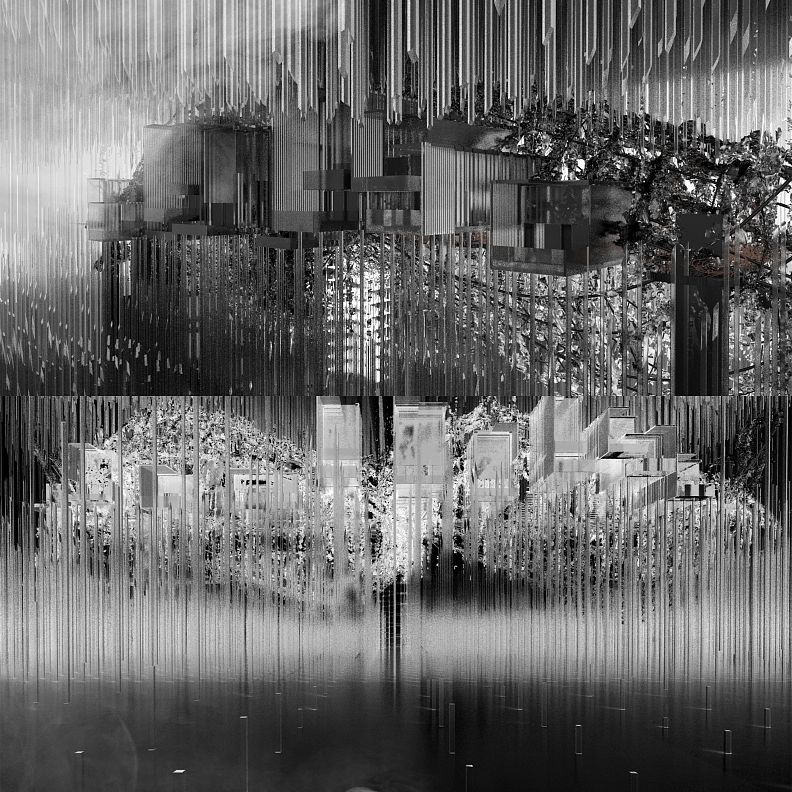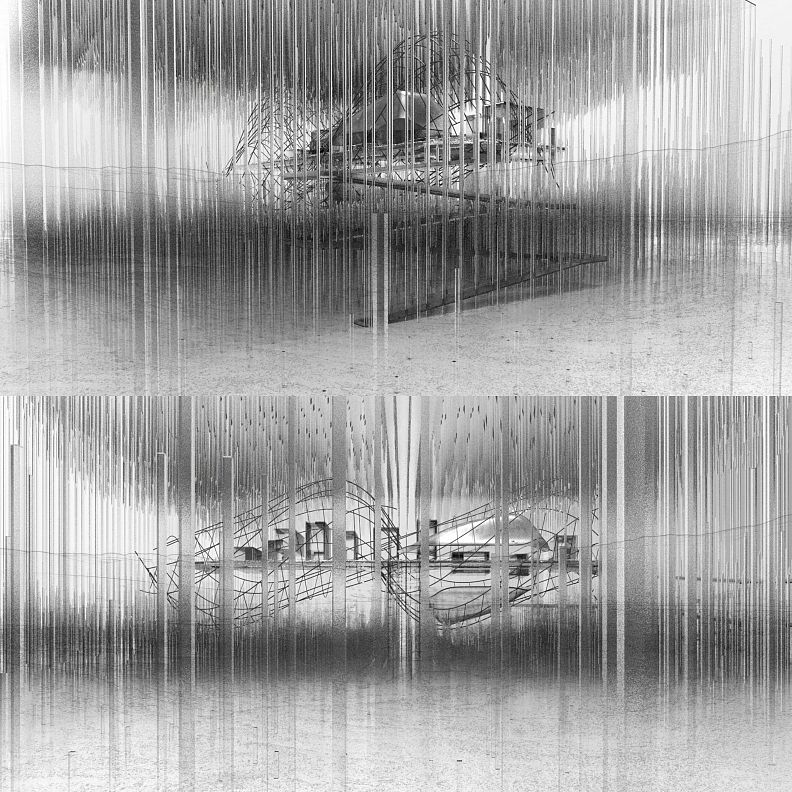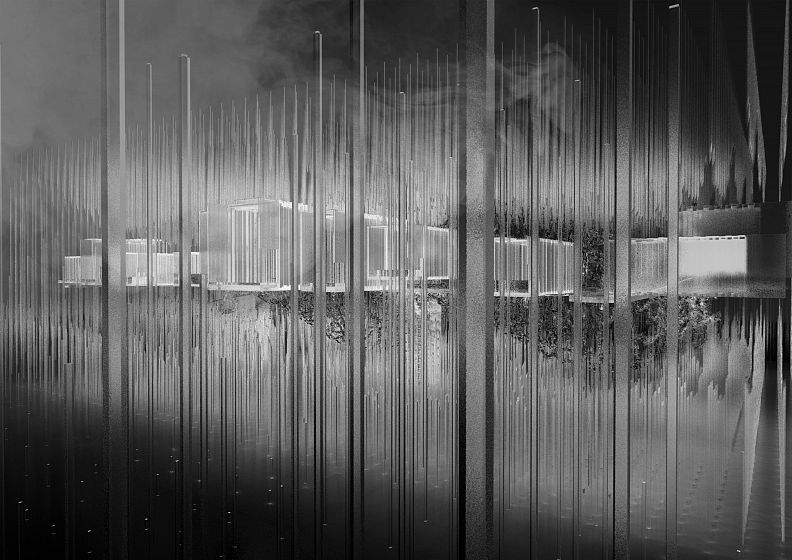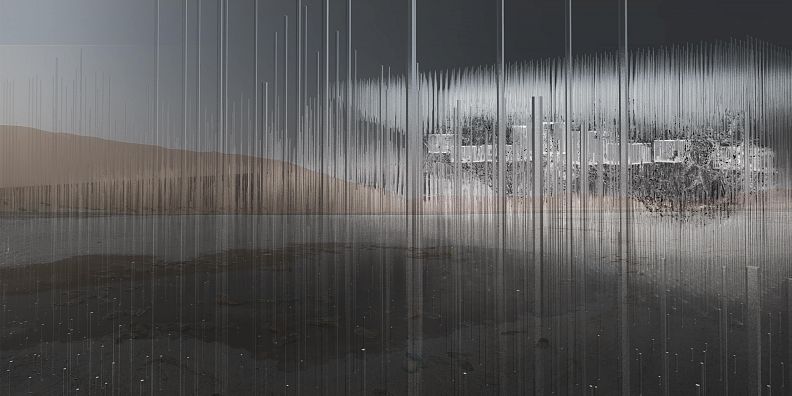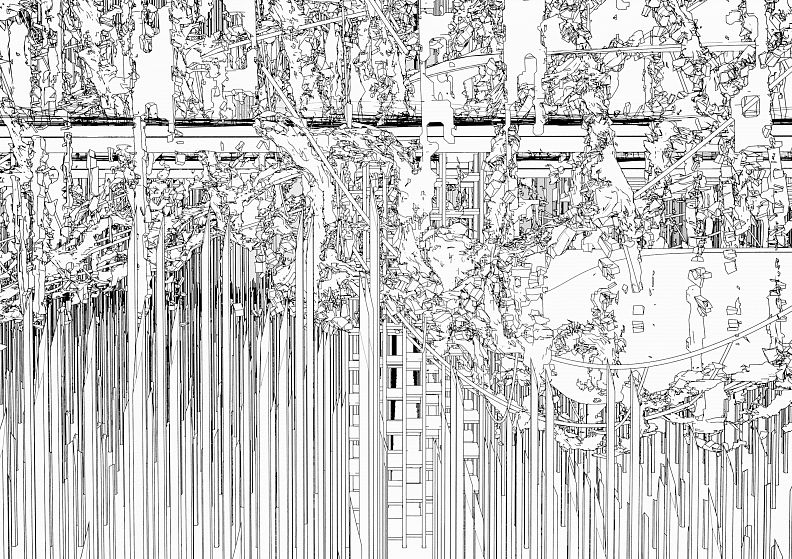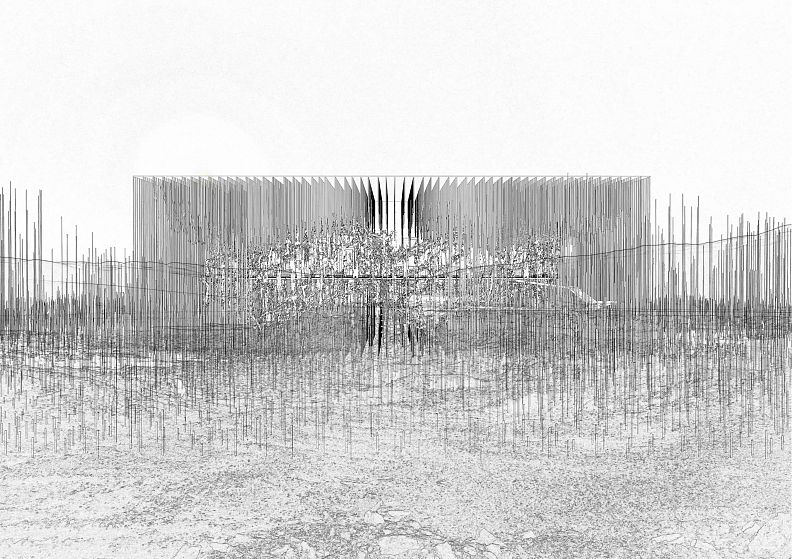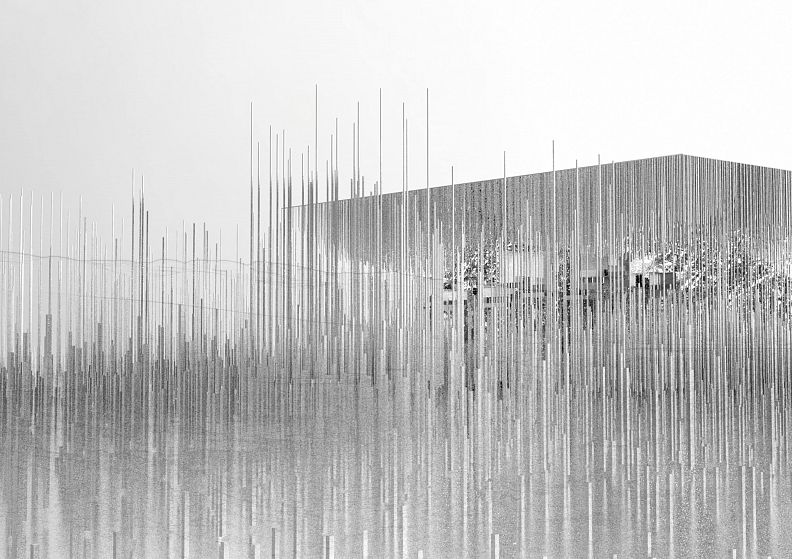Architectural Evolution of Landscape within Nature | Crystal Formation

Project idea
This project breaks a new ground in addressing the natural landscape of the UAE. Located in a Sabkha, the project is a system of poles and pixels as a new landscape and a way to protect but also form a tectonic architecture. The emerging 3-dimensional volume becomes a new destination to inhabit the desert. The growth of salt crystals is incorporated in the construction and materiality of the project. Both nature and architecture co-exist in a new formation and in a new sustainable balance.
Project description
1- The title of this project is Alternative Narratives Eco-Systems in Architecture: Earth, water and air.
2- The materials used for this project is using what nature gives us and try adapting to fulfill a positive impact. Using minerals from the Sabkha and water from the air.
3- Technique used throughout is working our way outside to insider, and seeing the site in a macro level rather than micro, in order to respect what nature gives us and try to create a landscape that would blend with the given landscape. In order to fulfil this, a stimulation was made on Maya in order to create a landscape that would replicate the pattern of the Sabkha, but having different dimensions of poles that would give the overview shape.
4- The project demonstrates a new type of innovation where we link architecture to its actual purpose, which is experience. Creating something that would be beneficial for the people and nature around.
5- The project could have different functions happening in it, however, the main function is to explore the space and experience the benefits of it.
6- The plan consists of three different grids that can’t be seen visually much, but definitely will be experienced when a person is approaching to the space.
The project is a system of expanded pixilation. We always tend to ignore abandoned sites around. The Sabkha, is a rich sandflat land which evaporite-saline minerals accumulate as the result of the environment and the climate around. They have this rich mineral which could be transformed into crystals and used for multiple purposes such as therapy. The project consists of a field within a field, I took the pattern and the outline of what the sabkha will look like after it’s dried and tried to generate a new landscape that would blend with the existing landscape. A series of poles are found all around the site, in a macro level you would be able to see the pattern that I’ve created using the different placement of poles and also by the different heights of them. These poles are functional, they absorb the minerals from the ground, and filters the air to get the water from it in order to general crystals. Because the site is unlimited and has no boundaries, these vertical elements could be placed where a sand dune is located, and during thunderstorms, it could capture the thunder and release the energy back to the earth. The reason why these pipes generate crystals in a sustainable way through capillary action, it to use what nature is giving us without harming it and try to give something back to nature. Salt is known for over years to be used for therapy, spas, medication etc. Hence, creating such project in a site that is abandoned because people have no reason to go there, will make everyone understand the beneficial elements of the site and also use this project as a place to get away or gather around for therapy.
Technical information
The scale of this project is unlimited, it all depends on the Sabkha site boundaries, however, for this specific project the scale was 500 x 500 meters and each pole around 20cm.
The most important aspect of this project is using what nature has given us without disrupting nature, for that reason the scale is not defined. Through the technicality of how these poles work, this project could be placed on any Sabkha site due to the rich minerals found there.
Co-authors
Instructor: Professor George Katodrytis
